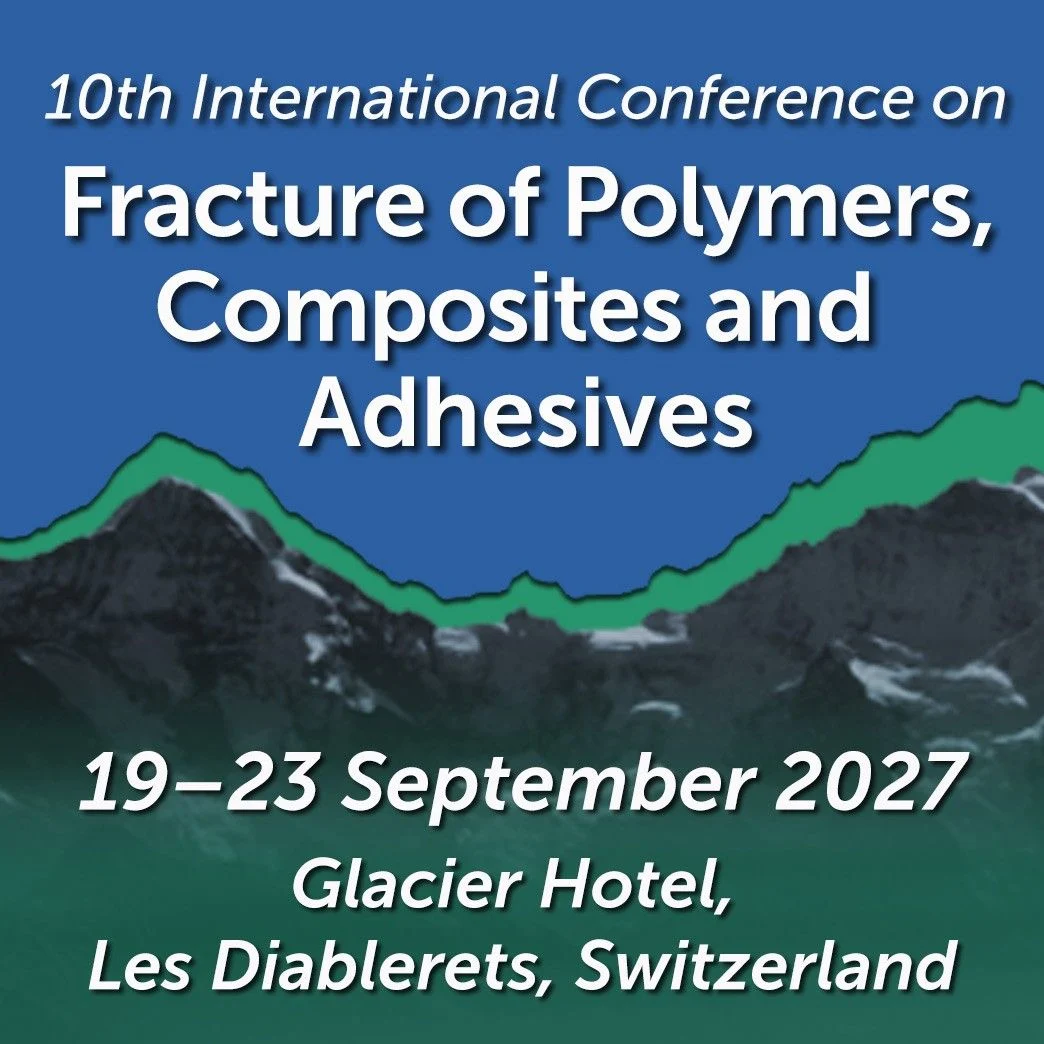10th International Conference on Fracture of Polymers, Composites and Adhesives
19-23 September 2027 Glacier Hotel, Les Diablerets, Switzerland

Join us for the 10th International Conference on Fracture of Polymers, Composites and Adhesives
The 10th International Conference on Fracture of Polymers, Composites and Adhesives, organised by the European Structural Integrity Society- Technical Committee 4, will take place from 19-23 September 2027 at the Glacier Hotel, Les Diablerets, Switzerland.
About
The 10th International Conference on Fracture of Polymers, Composites and Adhesives will take place from 19-23 September 2027 at the Glacier Hotel, Les Diablerets, Switzerland.
During the conference, there will be a special session to honour the contribution of the late Professor J. Gordon Williams to the understanding of fracture mechanics as applied to polymers and composites.
Papers on microscopic, laboratory- or structural-scale fracture mechanics testing and analysis methods, combined with or related to theoretical and numerical approaches and also applications of fracture mechanics to industrial polymeric components or structures are all welcome.
Of special interest are novel polymer-based materials and composites, e.g., soft, renewable or biodegradable materials and polymer-based materials made with new technologies, e.g., additive manufacturing, or integrating novel multifunctional properties.
Please note that submissions on fracture of other material and composite types, e.g., metal-matrix, ceramic-matrix, or concrete are outside the scope and will not be considered.
We are again inviting papers in the areas reflecting the current and future interests of TC4 as listed below. New developments and innovative applications are especially welcome. Both experimental and theoretical work is sought, including experimental work combined with modelling and simulation, to give a balanced view of the following subject areas:
Conference topics
Polymers: Low-rate properties, Kc, Gc and Jc. Essential work of fracture, we. Impact and high-rate properties. Ductile energy dissipation and notching effects. Environmental effects. Fracture in soft polymer-based materials. Non-standard toughness tests such as cutting, machining, scratching and other novel fracture test methods.
Composites: Single or multiple delaminations in continuous fibre composites including cross-ply and 3-D reinforcement and 2D delaminations in plates, shells or components. Impact and high-rate properties. Fatigue fracture, damage mechanisms, thermal properties, experimental characterization and simulation. Toughness of short fibre, particulate, nano- and micro-scale reinforced, or hybrid composites. Pure and mixed-mode fracture. Peeling of flexible laminates.
Adhesives: Structural adhesive joint toughness evaluation and simulation in the various pure and mixed-mode loading regimes. Evaluation of toughness in multi-material (hybrid) joints. Measuring toughness in highly toughened adhesive joints, including Jc testing. Geometry and thickness effects on Gand J. Toughening mechanisms, including nano-scale additives. Impact and high-rate behaviour. Environmental effects. Peeling testing and simulation.
Application of fracture mechanics: Service life prediction methods and models, including cyclic fatigue loads and combinations with environmental ageing effects. Data for FE design codes and virtual or "smart" testing. Applications in structural engineering, electronics, infrastructure and layered structures. Crash simulations. Use of novel NDT or of artificial intelligence in fracture testing, analysis, and predictions.
Oral and poster abstracts are invited on the above topics and should be submitted using the online abstract submission system.
Deadline: 22 January 2027
Deadlines
Abstract submission deadline: 22 January 2027
Author notification deadline: 19 March 2027
Author registration deadline: 16 April 2027
Early booking deadline: 16 April 2027
Discover and participate

Discover conference topics and submit oral and poster abstracts for review.
Exhibitors & Sponsors

If you are interested in exhibiting at, or sponsoring, this conference, please explore the commercial opportunities.
Supporting publication
Engineering Fracture Mechanics covers a broad range of topics in fracture mechanics to be of interest and use to both researchers and practitioners. Contributions are welcome which address the fracture behavior of conventional engineering material systems as well as newly emerging material systems. Contributions on developments in the areas of mechanics and materials science strongly related to fracture mechanics are also welcome. Papers on fatigue are welcome if they treat the fatigue process using the methods of fracture mechanics. The Editors especially solicit contributions which synthesize experimental and theoretical-computational studies yielding results with direct engineering significance.

Related links
Sign up for conference news

